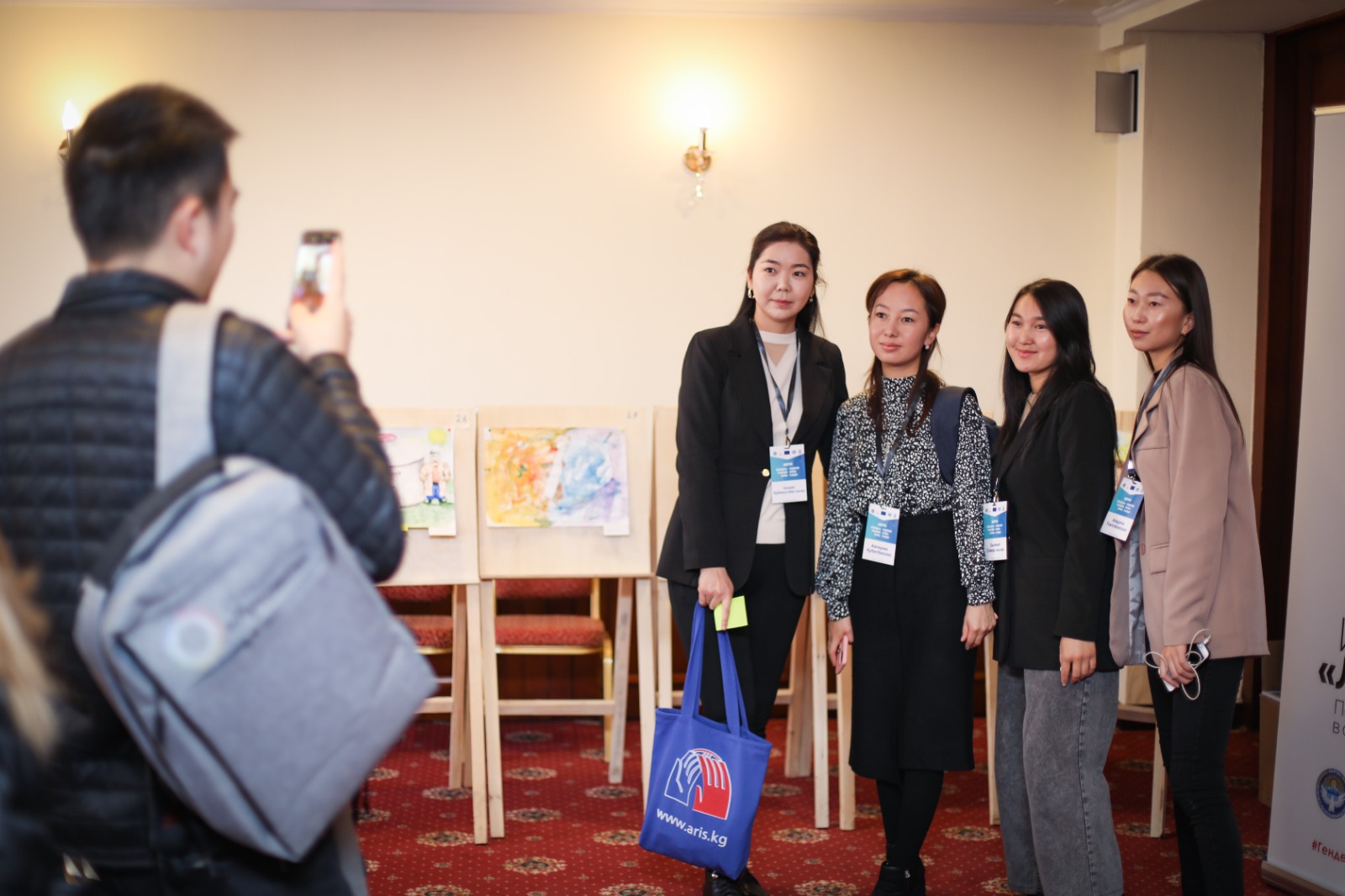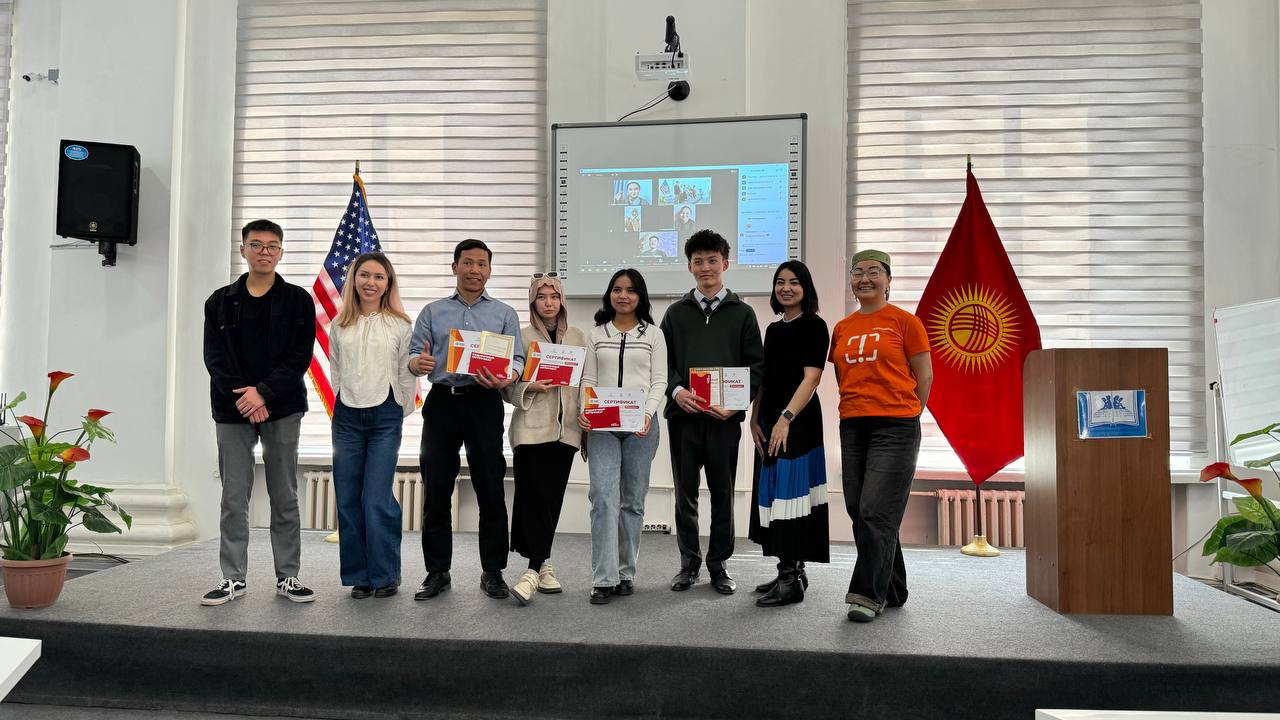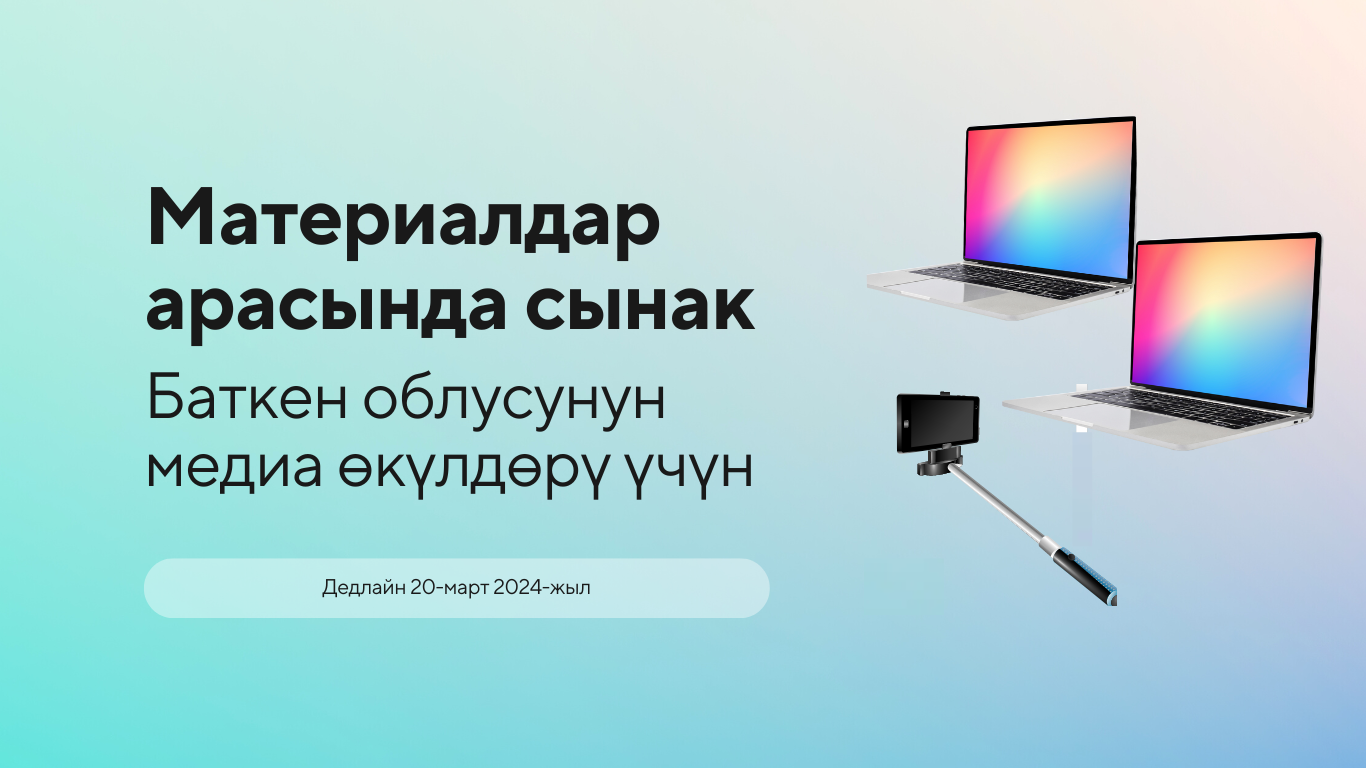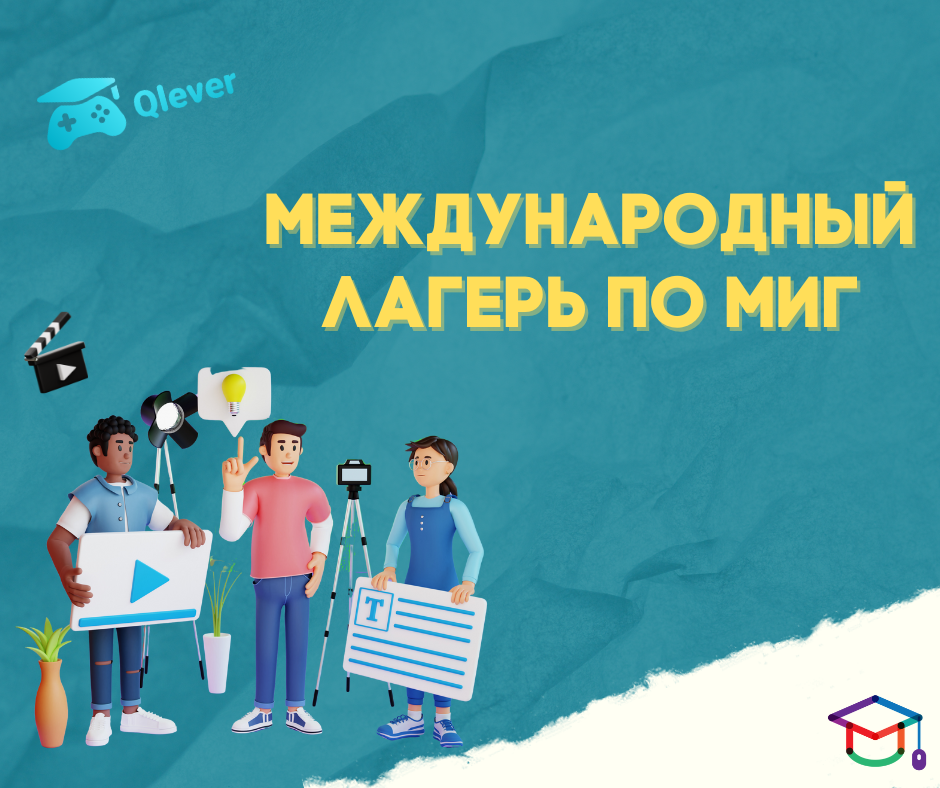Zero tolerance for gender-based violence: Time to act!

We are less and less shocked by the details of crimes motivated by gender discrimination and hate. Unfortunately, they become commonplace, and after a couple of days, we forget about them, leaving an indignant comment on social media. Probably, the threshold of gender sensitivity is already at zero level, because there are very few gender-sensitive journalistic materials in the media. The authors relish the details of the crimes, shifting the focus towards the victim, leading the discussion towards victim blaming, and criticizing them for what happened to them. Unfortunately, the further fate of critical cases is not always monitored by the public, including the media and journalists.
A large palette of media in Kyrgyzstan, regardless of the form of ownership and media orientation, is a vivid reflection of patriarchal and even discriminatory relations in society against the rights of girls and women. Even in the leading media of the country, there are such facts.
In general, both the civil society and the media community are aware of the basic principles of gender equality. But as practice shows, this is more superficial knowledge that is little used in life. Quite often there are reports, articles, and news articles where gender topics are formal, usually, these are journalistic materials dedicated to some dates or holidays. As a result, a distorted idea of gender equality is formed in society, which allegedly concerns only girls and women, and that it contradicts the Kyrgyz mentality. Therefore, the project focused on the media that work in traditional communities to shift the public discussion on gender equality and the elimination of gender-based violence to the plane of respect for human rights.
Show empathy and change public opinion!
The project on gender-sensitive journalism in regional media in Chui, Naryn and Osh regions promote zero tolerance for any form of gender-based violence, including psychological violence, based on the principles of gender-sensitive journalism.
To achieve these goals, a six-month training was organized for editors\ editrix and journalists on the basics of gender-sensitive journalism, so that in the process of working on their articles, reports, notes, and essays, they could distinguish and combat gender stereotypes, be more sensitive to the victims of violence, show empathy, and speak openly about hidden threats and persecution of girls and women.
During the training, separate sessions were devoted to the analysis of various forms of psychological violence; the Kyrgyz media write very little about this. Often the silence or ignoring of such forms of violence leads to sad consequences in the future.
Nothing is said about cyberbullying, which is increasingly spreading in the Kyrgyz segment of social media. Unfortunately, there are already facts when the use of hate speech and hatred against girls and women, even calls for violence, are perceived not as actions that require condemnation, but as a manifestation of the expression of freedom of speech and opinion online.
During the course, participants analyzed specific cases using GALS methods (the abbreviation GALS stands for Gender Action Learning System, which in Russian means “Система изучения [и определения] гендерно-чувствительных действий”. The author of the methodology is Linda Mayo) and design thinking to determine the essence of the problem situation.
Journalists, editors\editrixes analyzed the cases in detail to compile a scale of psychological abuse. During the group discussions and analysis, the participants were surprised at how the scale changes and what constitutes psychological abuse. They saw how an ignored case of psychological abuse can escalate into physical abuse.
One of the highlights of the training was the inclusion of men in discussions on gender-sensitive journalism to broaden the themes of issues discussed in society that is relevant to gender equality. This was one of the
key points of the training, taking into account the mental representations of the role of women and men in the Kyrgyz society.
According to media trainer Myrzaiym Zhanybek, among the expected results were the introduction of key terms on the prevention of gender-based violence into the journalistic environment, as well as the improvement of principles for covering sensitive topics and, most importantly, the understanding that violence cannot and should not be considered a “problem of an injured person”, and that it has long gone beyond, representing the public interest.
This was a cross-cutting theme of the course explaining the importance of the role of the media and journalists in the prevention and reduction of cases of gender-based violence. By the end of the course, there were more than 70% of the project participants who had a strong understanding of the principles and foundations of gender-sensitive journalism.
Sessions devoted to the analysis of proverbs and sayings, those playing an important role in Kyrgyz culture contributed to the promotion of the ideas of gender-sensitive journalism, especially in the Kyrgyz media. As a first step, the participants analyzed those proverbs and sayings separately related to men and women, and then analyzed their contents and influence on the formation of public opinion on gender equality issues during group discussions.
It was a memorable session because proverbs and sayings are an integral part of the especially Kyrgyz-language media space and often they are used without knowing the context, carrying a different message.
“According to the results of the discussions, the participants concluded that many proverbs and sayings are related to a specific time and are of little use now. We even concluded that today the society needs new proverbs and sayings that take into account the norms of gender equality” said media trainer Nazira Zhusupova.
Towards Gender-Sensitive Journalism
Throughout the training course on gender-sensitive journalism, one way or another, ethical issues that are closely intertwined with gender have emerged. This was felt during the process of preparation of journalistic materials, and in organizing editorial trips, and in identifying candidates for internships, and even in holding corporate events, in which sexism (prejudiced, negative attitude towards people based on gender) and even ageism (discrimination based on certain stereotypes and prejudices by age) have emerged.
But not everyone was open and willing to share their opinions with the community. Some of the gender stereotypes have remained a topic of discussion hidden from the majority, because much of the area of human rights, protection of the rights and interests of girls and women are still perceived by part of society as introduced from outside and does not correspond to Kyrgyz ideas about the role of women and men.
The idea to create a gender-oriented code of ethics for media organizations and journalists found a lively response from the participants of the project. Local media have a Code of Ethics covering general ethical issues, adopted in 2007 when there were no discussions on gender-sensitive journalism.
All articles of the Gender and Ethics Code were drafted by the participants of the project, among whom women predominated for various reasons. it is important to note that everyone had an understanding that gender issues equally concern both women and men. Therefore, in the course of group discussions, the rights of women and men in the media sphere were equally discussed. As a result, the project participants concluded that the rejection of discriminatory stereotypes and prejudices will create harmonious conditions for the professional growth and development of all.
“It was an interesting case when journalists, line by line formed the basis of a future gender-oriented code. During the discussion of the articles of the future code, discussions arose, and we observed how wide is
the range of topics and problems included in gender equality,” says media trainer Aizada Kalkanbayeva.
Despite the geographical remoteness of the participants from each other, they were interconnected pretty closely. How did it manifest itself? In Naryn, they worked on a draft version of the text of the code, which was proposed by their colleagues in Osh. Further, in Bishkek, in the third group, all recommendations and proposals were finalized. Trainers and mentors of the project did not interfere in this process. And, by the way, the text of the code was originally written in the Kyrgyz language, the already approved version was translated into Russian. Usually, the opposite happens, and this is noticeably reflected in the nature and language of the document received.
During the discussion of the norms of the code, in addition to the principles of gender-sensitive journalism, issues of observance of women's labor rights were raised. Project participants shared their stories related to
violations of their labor rights. Unfortunately, we have to admit that the violation of women's labor rights is not always perceived in the context of violations of human rights or gender equality, recorded in the labor legislation of the Kyrgyz Republic. And many more to come, in addition to what they had.
Therefore, the participants in Naryn insisted that the code should contain articles regarding the observance of gender equality in labor collectives. They hope that the inclusion of these norms in the code in the future will help them defend their labor rights, which today are infringed on the basis of gender.
Also, specific articles appeared in the code on non-admission of gender discrimination in personnel policy, distribution of responsibilities and editorial assignments; on guarantees of equal conditions and wages; about equal opportunities for promotion.
In Article 5, the project participants added a provision on the development of a flexible policy by media organizations within the team, which would take into account gender aspects, creating comfortable working conditions that do not infringe on the rights of employees of editorial offices/media organizations.
A separate clause in the code mentions the prevention of sexual discrimination and harassment in editorial offices and the timely response to such complaints. This recommendation caused a lively discussion, because in practice journalists do not know whom to contact, whom to trust and how to act in such cases. Left alone with their questions and problems, journalists feel guilty in such situations, engaging in self-blame and self-restraint. For men in the media environment, this topic is even more taboo. Journalists prefer not to talk about cases of sexual harassment and discrimination at all. Therefore, the issues of violation of the labor rights of journalists and the elimination of sexual harassment at work are important, and we should pay special attention to these issues, promoting the ideas of gender equality.
Journalists see one of the ways to solve the problematic issues mentioned in the code in the constant increase in gender awareness of the management and all employees of media organizations. According to them, leaders often do not show gender sensitivity, only verbally declaring gender equality.
Therefore, it is necessary to provide separate and enhanced training in the basics of gender sensitivity specifically to the heads of media organizations, among which men predominate.
“Without the support of media organizations, the gender code may remain on paper, so promotion and training on the articles of this important document is needed,” the participants of the course urged following the results of the work, says media trainer Almaz Ismanov.
By ignoring the rights of girls and women, society loses much more than just the votes of more than half of the population. Such a society does not develop, and gender-based violence becomes the norm, and this is seen in the news feeds of local media.
It is hoped that, thanks to the project to promote gender-sensitive journalism, the situation with the coverage of gender equality and the rejection of gender-based violence is gradually changing.
The project participants independently developed a Code of Ethics based on the basic principles of gender-sensitive journalism. At the forum in Bishkek in November 2021, summing up the results of a six-month training, its participants jointly signed an Agreement on the adoption of a code of ethics on gender-sensitive journalism.
This unique document created the foundation for the qualitative development of the Kyrgyz media, regardless of the form of ownership, focused on promoting gender equality and the universal principles of gender-sensitive journalism, free from prejudices, superstitions, stereotypes, and any form of violence.




